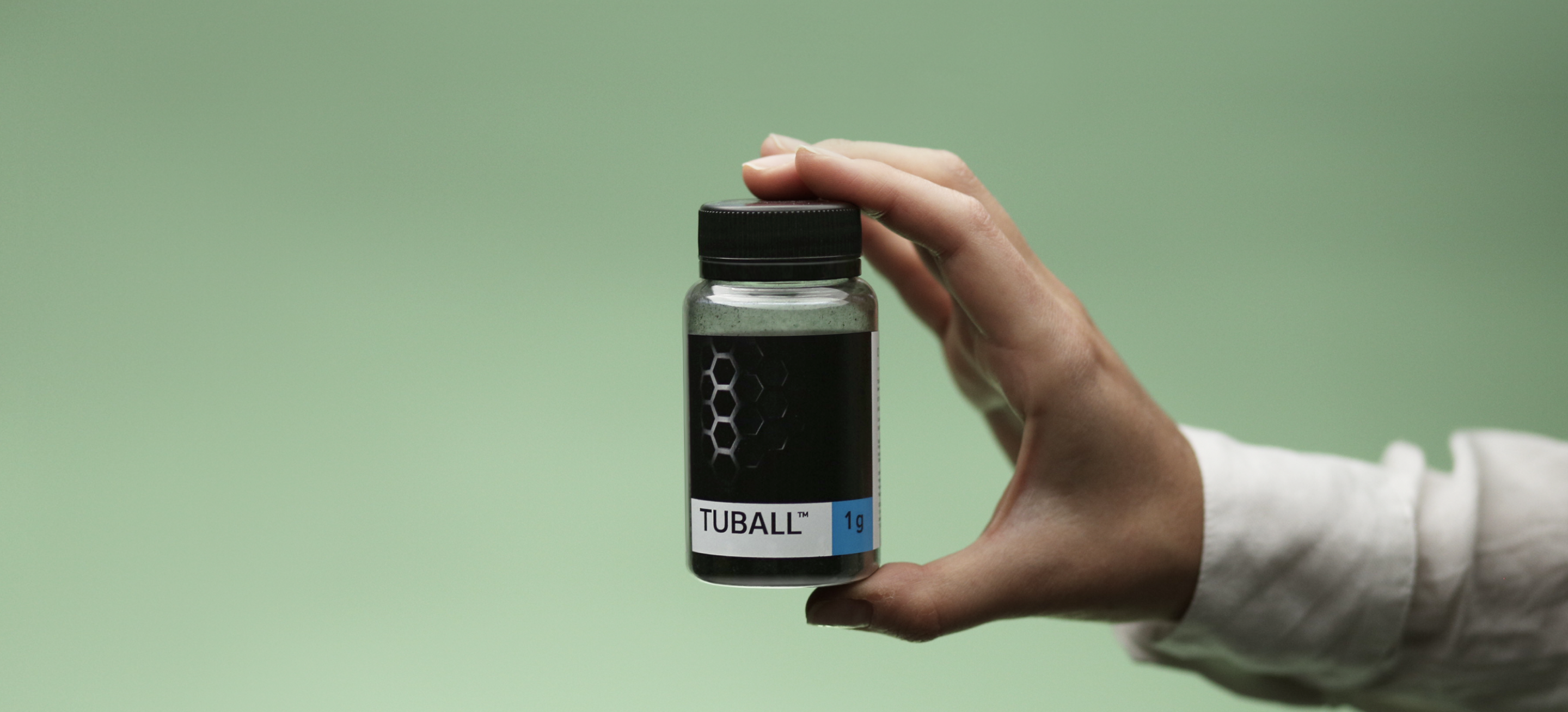As the world’s largest producer of single wall carbon nanotubes, OCSiAl is taking the lead in raising transparency of the nature of nanotubes and their responsible handling. The company has an ongoing policy of initiating internal as well as external independent testing and research, and it has already accumulated a significant knowledge base on the morphology of TUBALL™ nanotubes, on their safe handling and use in the workplace, and on compliance with the regulatory requirements of the EU, the USA and other regions.
TUBALL™ HEALTH & SAFETY AND ENVIRONMENTAL STATUS
TUBALL™ carbon nanotubes are extremely thin single-layer rolled-up sheets of graphene that are more than 5 µm in length and have a diameter of 1.6 (± 0.4) nm. They have a number of exceptional characteristics, such as superior electrical conductivity, strength and temperature resistance. In contrast to multi wall carbon nanotubes, carbon fibers and some other carbon-based conductive additives, TUBALL™ nanotubes demonstrate high flexibility and consequently they have a number of completely different features in terms of health & safety and environmental considerations.

In May 2018, OCSiAl conducted a number of case studies in the workplace to measure the possible exposure of inhaled nanoparticles with workers. These case studies on TUBALL™ nanotubes showed that the amount of nanotubes released during field-test sampling was well below the NIOSH REL of 1 µg/m3 8h TWA (< 3% NIOSH REL). In the specific case study on the handling and processing of TUBALL™ MATRIX 603, no nanotube release was observed.
In nanoaugmented products, the nanotubes are normally bound within a matrix so there is no risk of them being exposed (different polymers were tested like ‘HDPE, Expoxy and natural elastomer’). In May 2017, VITO, a leading European independent research and technology organisation, conducted health & safety testing on migration of TUBALL™ carbon nanotubes from a material’s matrix. Drilling and Taber abrading tests on blank and TUBALL™-augmented epoxy, polyethylene and elastomer materials were carried out inside a test chamber so that any aerosol release could be captured and measured with a transmission electron microscope (TEM). These tests confirmed the absence of free-standing or protruding nanotubes.
OCSiAl is continuing its responsible approach to health & safety and environmental issues by bringing its products into line with global standards..
OCSiAl was the first and currently remains the only company to be authorised to undertake large-volume commercial shipments and marketing of carbon nanotubes in Europe, North America and other areas.
TUBALL™ carbon nanotubes have been recognised to fulfil the requirements of the EU’s RoHS (Restriction of the use of Hazardous Substances) compliant according to the definitions and restrictions given by The European Parliament, Directive 2011/65/EC, standards that are aimed at reducing the harmful impact of substances on the environment and on human health. The RoHS statements underlines that OCSiAl’s nanotube substances comply with the permitted concentration values of the ten designated substances and that they do not contain PBB or PBDE (Annex II of the RoHS directive). In 2017 and 2018, OCSiAl was awarded certificates confirming the compliance of the TUBALL™ nanotube production process with the requirements of the ISO 9001:2015 (Quality Management System), ISO 14001:2015 (Environmental Management System) and ISO 45001:2018 (Occupational Health and Safety Management System) standards.

